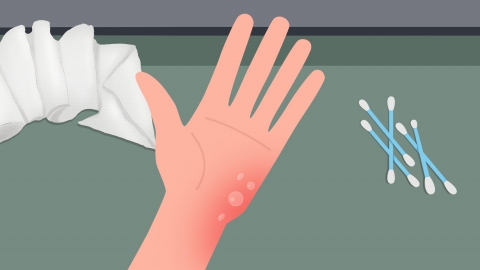How to treat burns with blisters to heal quickly
Generally, burns with blisters can be managed through methods such as rinsing with cool water, disinfection, blister management, topical medications, and oral medications. The specific approaches are as follows:

1. Rinsing with cool water: Immediately after the burn, flush the affected area with running water at 15–20°C for 15–30 minutes to lower the skin temperature and reduce continued heat penetration into deeper layers of skin. If the burn involves fingers or toes, the affected area may also be soaked in cool water.
2. Disinfection: Disinfection helps kill bacteria at the burn site and reduces the risk of infection. After cleaning the burn area, use mild disinfectants such as povidone-iodine to disinfect the blistered area and prevent infection. If there are foreign substances on the wound surface, they should first be cleaned with normal saline or hydrogen peroxide solution.
3. Blister management: Small blisters may be absorbed spontaneously, while large blisters require aspiration under a doctor's guidance to relieve skin tension and promote healing. After aspiration, maintaining a moist wound environment is beneficial for cell regeneration and repair.
4. Topical medications: After a burn, antimicrobial agents such as erythromycin ointment, mupirocin ointment, or moist burn ointment may be applied under medical supervision to prevent infection and promote skin repair.
5. Oral medications: If pain caused by the burn is severe, analgesics such as ibuprofen sustained-release capsules, diclofenac sodium sustained-release tablets, or celecoxib capsules may be taken as directed by a physician to relieve pain. Additionally, to prevent local infection, oral antibiotics such as amoxicillin capsules, cefixime dispersible tablets, or azithromycin tablets may be prescribed for their anti-inflammatory and antibacterial effects.
During the management of burn-related blisters, tight clothing that compresses the blisters should be avoided. Increased nutritional intake, particularly protein-rich foods, should be encouraged to facilitate wound healing.





